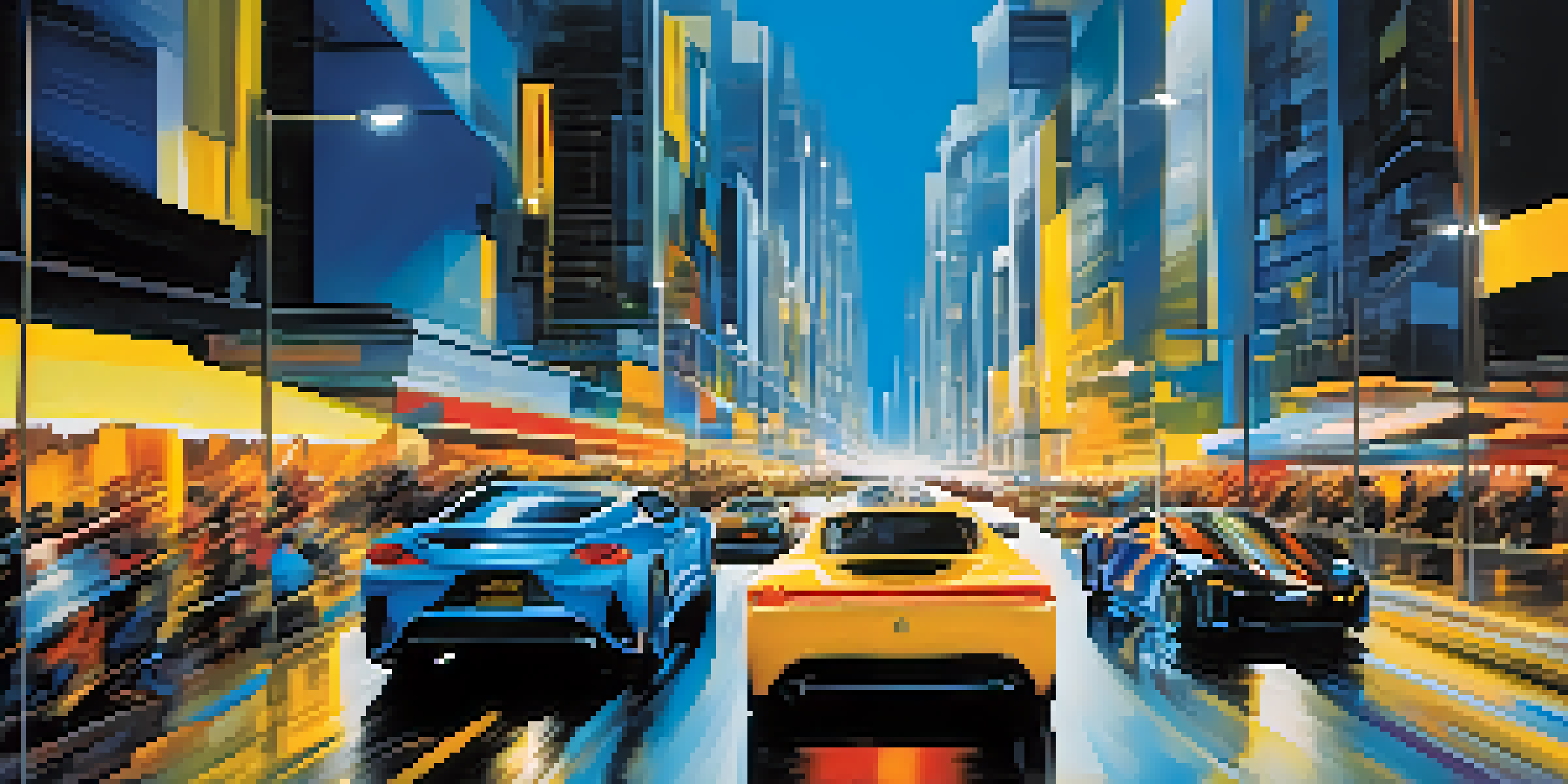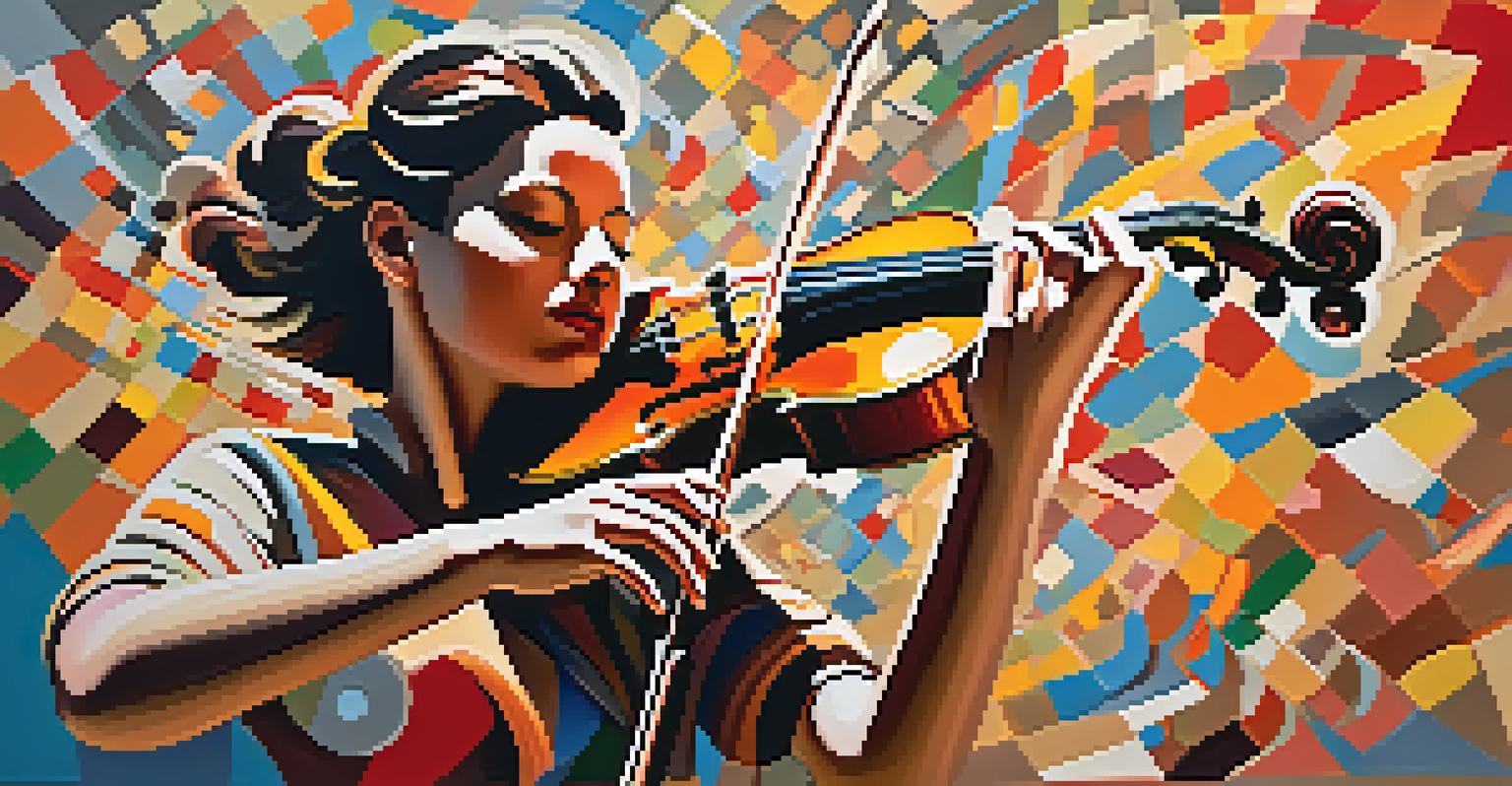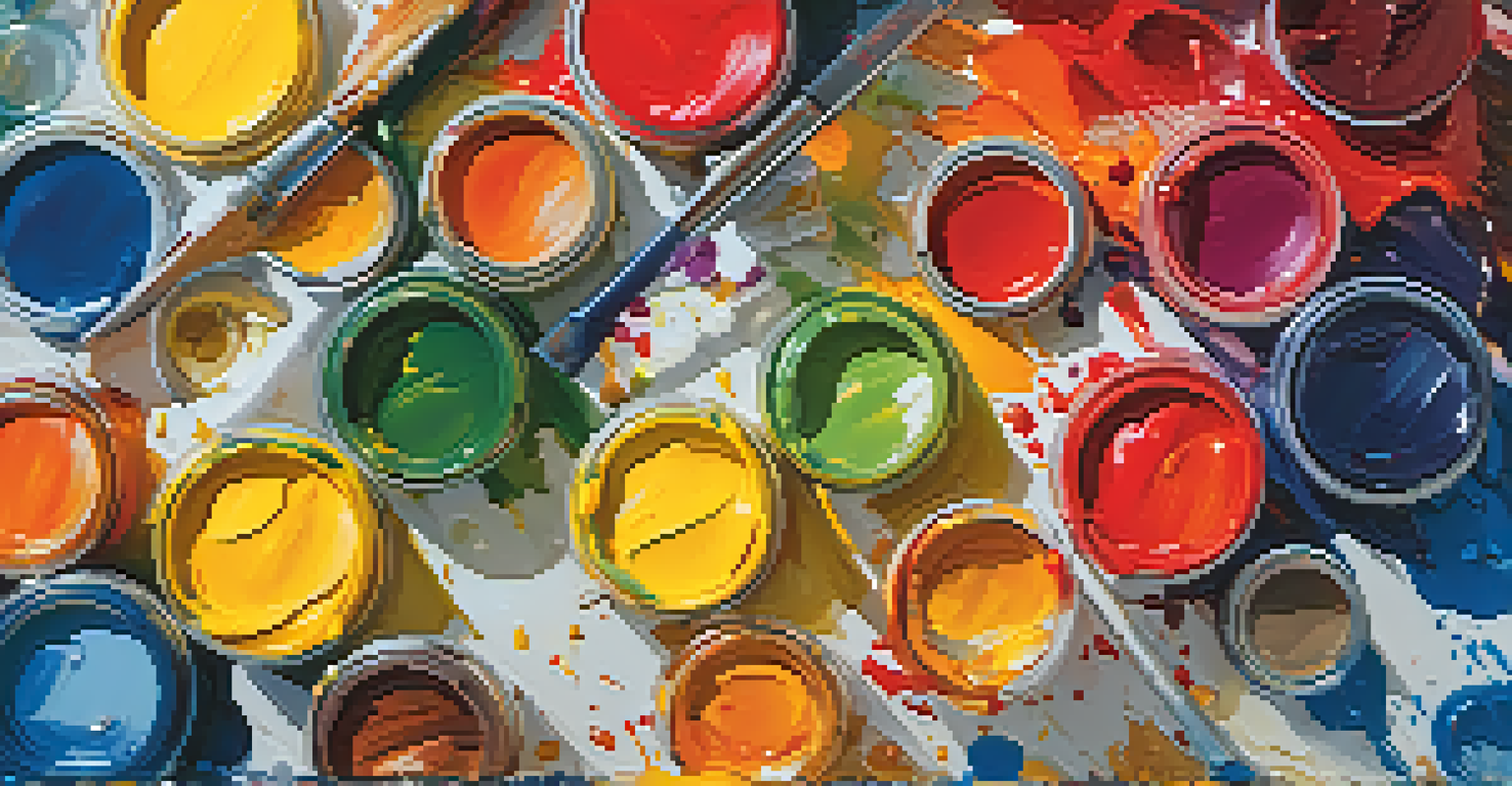The Use of Color in Futurist Paintings: An Analysis

Understanding Futurism: A Brief Overview
Futurism emerged in the early 20th century, primarily in Italy, as an artistic movement that embraced modern technology and speed. Artists sought to capture the dynamic energy of contemporary life, moving away from traditional forms. This break from the past was not merely thematic; it involved radical changes in technique and color usage as well.
Color is the keyboard, the eyes are the harmonies, the soul is the piano with many strings.
The movement was fueled by the belief that art should reflect the excitement of the modern world. Futurists were captivated by the advancements in technology, machines, and urban life, which all influenced their artistic expressions. This context set the stage for a unique approach to color, as they aimed to evoke emotion and convey motion.
In the realm of color theory, Futurists were inspired by the ideas of color psychology, believing that colors could evoke specific feelings and ideas. They often used vibrant hues to express the intensity of modern life, pushing boundaries to create new visual experiences. Understanding this background is essential to appreciate the role of color in their artworks.
The Role of Color in Futurist Paintings
Color in Futurist paintings serves as a primary tool for conveying emotion and movement. Artists like Umberto Boccioni and Giacomo Balla employed bright colors to reflect the vibrancy of their subjects, often blurring the lines between foreground and background. This technique gave their works a sense of dynamism and energy, making the viewer feel as if they were part of the action.

The Futurists believed that color could represent not only visual beauty but also the psychological and emotional experiences of modern life. By using contrasting colors, they created tension and excitement, drawing the viewer's attention to specific elements within the composition. This intentional use of color helped to communicate the chaos and speed of the world around them.
Color's Role in Futurist Art
Color was a vital tool for Futurist artists, used to convey emotion, movement, and the dynamism of modern life.
An example of this can be seen in Balla's work, 'Dynamism of a Dog on a Leash,' where the swirling colors depict the movement of the dog and its owner. The vibrant palette captures the essence of their hurried pace, illustrating how color can transform a static image into a vivid narrative. Such examples highlight the innovative approaches to color that defined the Futurist movement.
Color Symbolism in Futurist Art
Futurist artists often used color symbolism to deepen the meaning of their works. Each color choice was deliberate, aiming to evoke specific associations and emotions. For instance, red often represented passion and aggression, while blue could symbolize calmness or melancholy, establishing a complex emotional landscape within their paintings.
The artist must train not only his eye but also his soul.
This symbolic use of color allowed Futurists to communicate their revolutionary ideals and the exhilaration of modernity. By manipulating color palettes, they could infuse their works with a sense of urgency or serenity, depending on the message they wished to convey. This approach not only enhanced the visual experience but also encouraged viewers to engage with the underlying themes.
Take Boccioni's 'The City Rises,' where the dramatic use of orange and yellow evokes the heat and intensity of urban growth. The colors not only depict a bustling city but also reflect the emotional fervor associated with progress and change. Such examples show how color symbolism was integral to the Futurist ethos.
The Influence of Technology on Color Choices
The Futurists were profoundly influenced by the technological advancements of their time, which in turn affected their color choices. The rise of industrialization brought new pigments and materials to the art world, expanding the possibilities for color application. This access to innovative colors allowed artists to experiment and push the boundaries of traditional painting.
For instance, synthetic dyes made it possible for artists to achieve more vibrant and varied hues than ever before. This availability opened up a world of creative expression, allowing Futurists to depict the energy and speed of modern life in ways that were previously unimaginable. As a result, color became a powerful medium for expressing the excitement of technological progress.
Symbolism in Color Choices
Futurist artists employed color symbolism to evoke specific feelings and ideas, enhancing the emotional depth of their works.
In works like 'The Charge of the Lancers' by Boccioni, the use of electric blues and bright yellows reflects the energy and speed of the subjects. The incorporation of modern colors not only enhanced the visual appeal but also symbolized the rapid advancements of the time. This relationship between technology and color was a defining characteristic of the Futurist movement.
Contrasting Colors: A Futurist Technique
One of the hallmark techniques of Futurist painting is the use of contrasting colors to create visual tension and dynamism. By juxtaposing bold colors, artists could evoke a sense of movement and energy, making their compositions more engaging. This method mirrors the chaos of modern life, encapsulating the frenetic pace of the world in their art.
For example, in Balla's 'The Hand of the Violinist,' the vibrant contrasts between warm and cool colors create a lively scene that pulsates with energy. The strategic placement of color not only draws the eye but also enhances the sense of rhythm and motion, allowing viewers to feel the music visually. This interplay of colors is a testament to the innovative spirit of the Futurists.
Such techniques demonstrate the Futurists' commitment to breaking away from traditional artistic conventions. The bold choices and contrasts in color were not just for aesthetics but were intended to provoke thought and emotion. This focus on color dynamics was essential in conveying the movement's core themes.
The Legacy of Color in Futurist Paintings
The impact of color in Futurist paintings extends far beyond the movement itself, influencing generations of artists that followed. The innovative use of vibrant palettes and emotional symbolism laid the groundwork for subsequent modern art movements. Artists were inspired to explore new avenues of expression, often incorporating Futurist principles into their own works.
As color theory evolved, the lessons learned from the Futurists became foundational in understanding how color can shape perception and meaning in art. Contemporary artists continue to draw upon these principles, experimenting with color in ways that echo the revolutionary spirit of the Futurists. This enduring legacy highlights the importance of color in art history.
Influence of Technology on Color
Technological advancements provided new pigments and materials, allowing Futurists to experiment with vibrant colors and express the energy of modernity.
Moreover, the exploration of color in Futurist paintings encourages ongoing dialogue about the relationship between art and modernity. As we continue to engage with and reinterpret these ideas, the influence of Futurism remains palpable in today’s artistic landscape. The impact of their vibrant color choices is a testament to the movement's lasting significance.
Conclusion: The Power of Color in Futurist Art
In conclusion, color plays a pivotal role in the narrative and emotional depth of Futurist paintings. From vibrant contrasts to symbolic meanings, the use of color was essential in conveying the movement's revolutionary ideals. As Futurists sought to embody the essence of modern life, their innovative approaches to color became a defining characteristic of their work.
The exploration of color in Futurism not only enhances our understanding of this movement but also invites us to consider the broader implications of color in art. It challenges us to think about how colors influence our emotions and perceptions, creating a rich tapestry of experiences. This understanding is crucial for both artists and art enthusiasts alike.

Ultimately, the legacy of Futurist color usage is a reminder of the transformative power of art. As we continue to explore and celebrate the intersection of color and emotion, we honor the innovative spirit of the Futurists and their enduring influence on the art world.